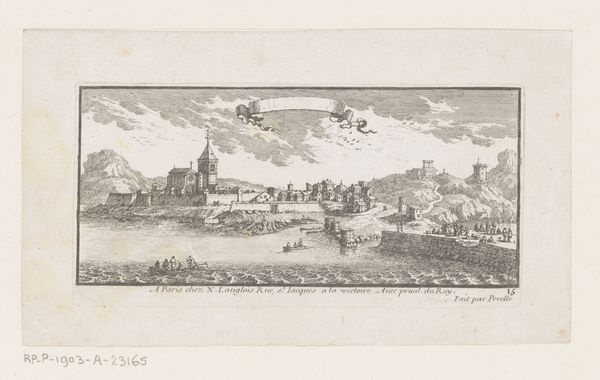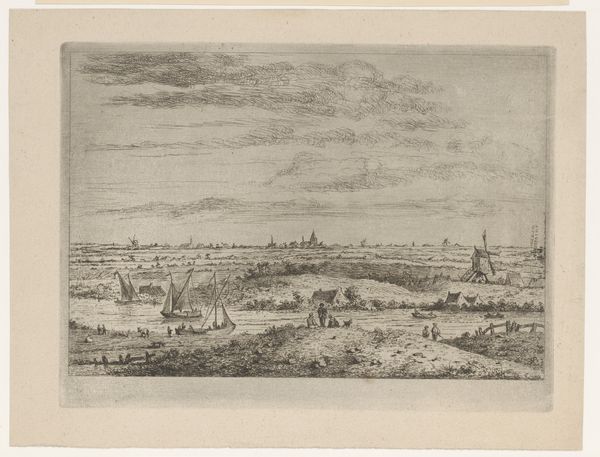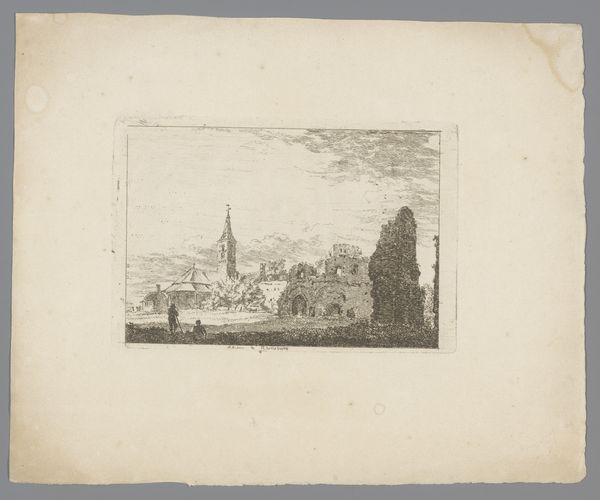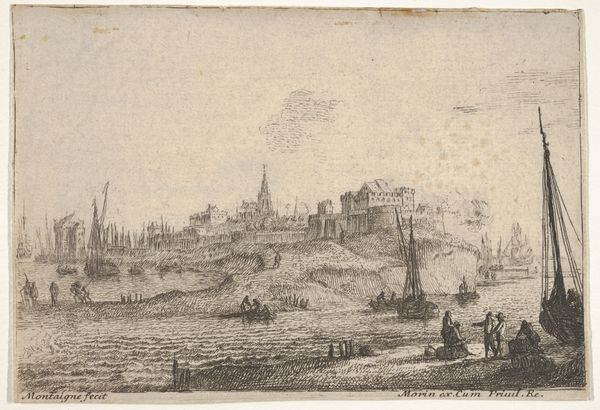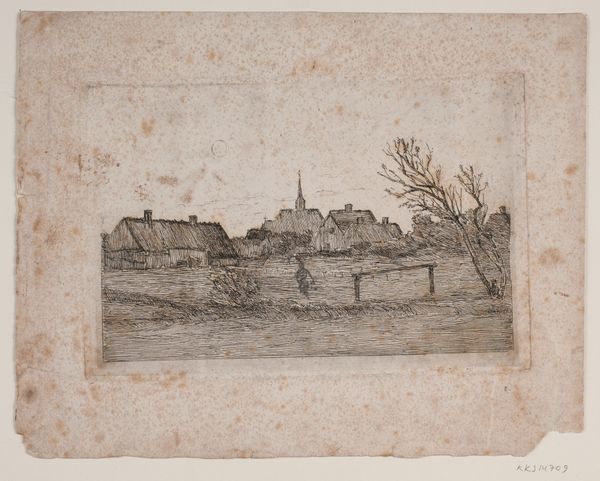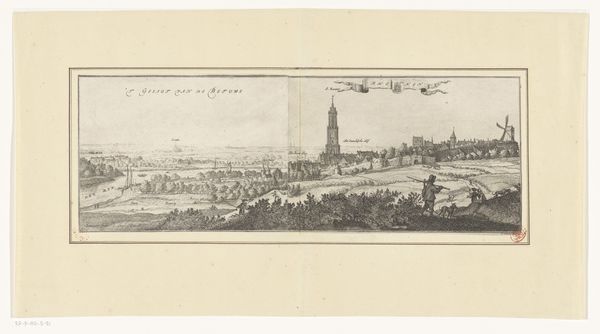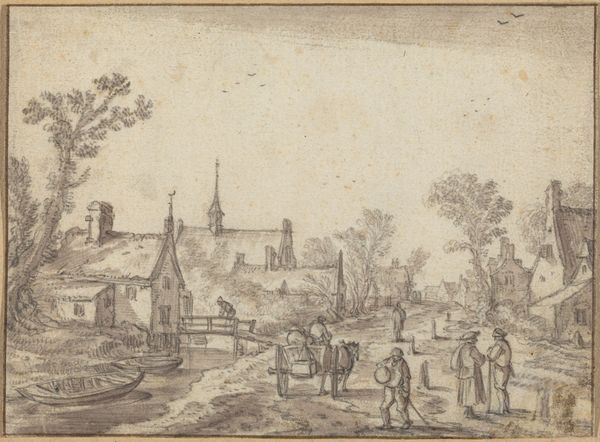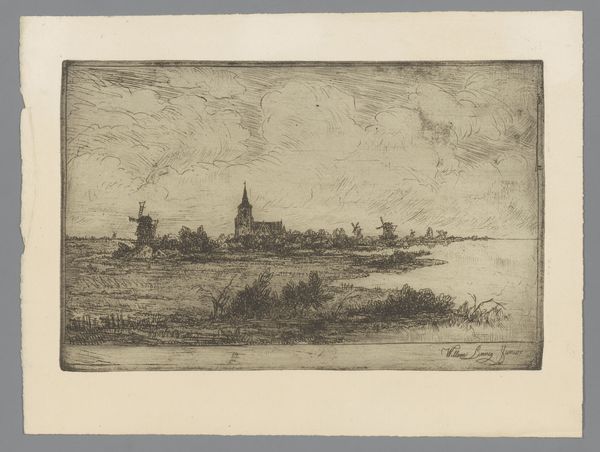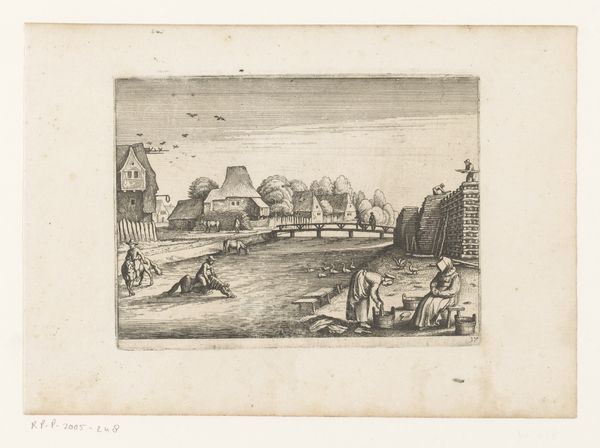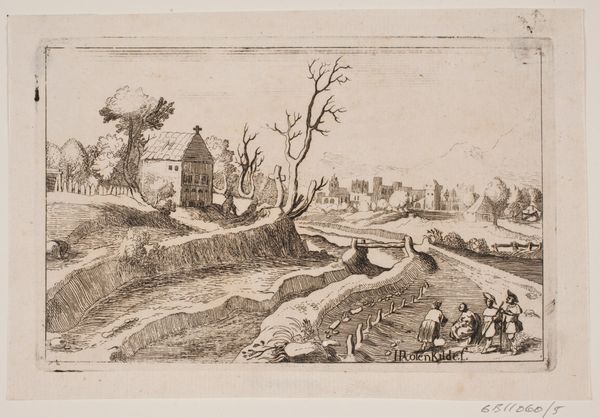
drawing, print, etching
#
drawing
# print
#
etching
#
landscape
#
cityscape
#
realism
Dimensions: height 136 mm, width 213 mm
Copyright: Rijks Museum: Open Domain
Curator: This etching, entitled "Gezicht op een dorp met kerk op de achtergrond," offers a view of a village with a church in the background. Willem (II) Linnig likely created this realistic cityscape sometime between 1852 and 1890. It's currently held at the Rijksmuseum. What's your initial read? Editor: Well, it feels somber. The muted tones and tight composition create this insular feeling. The linear perspective pulls you into the village, but something about the light feels heavy, almost like impending rain. Curator: Notice the precision of the etching. The line work creates a dense network describing each structure. Think about the labor involved. Linnig wasn’t just representing the village; he was physically working with its image through acids and metal. How does that tactile engagement impact our understanding? Editor: It adds a layer of complexity. The physicality of the etching process, that intricate linework you pointed out, transforms the scene. What appears as a simple vista is actually the result of very deliberate mark-making, repeated action that translates labor into form. Curator: Exactly. The buildings themselves suggest a certain economic reality too. Humble structures closely packed suggest particular living conditions and communal relationships of the time. This etching becomes less about a picturesque view and more about material existence and societal fabric. Editor: That dense application is striking. If we look at it semiotically, the darkness might suggest themes of melancholy and mortality but maybe also of endurance in a close-knit society where the church oversees their daily labors. Curator: An interesting point; however, consider this. Willem (II) Linnig, positioning himself within the Realism movement, attempts to capture and document this tangible setting. He's revealing a specific moment in the landscape, and that depiction would have been immediately accessible, especially to those familiar with the economic struggles it implied. Editor: That's compelling. In the end, it seems we find that, whether reading for visual components, or social factors, these layered perspectives are a powerful entry point for discussing Linnig’s print. Curator: Absolutely. Looking beyond its surface beauty, the artwork’s materiality connects us with the work that constructed the imagery we see here, offering a profound view of a place and the community.
Comments
No comments
Be the first to comment and join the conversation on the ultimate creative platform.


